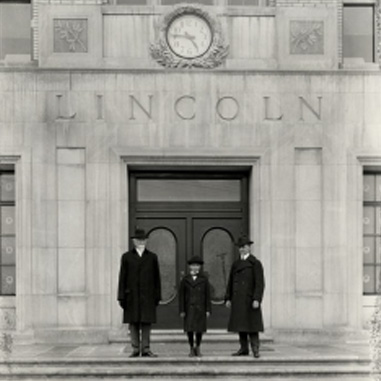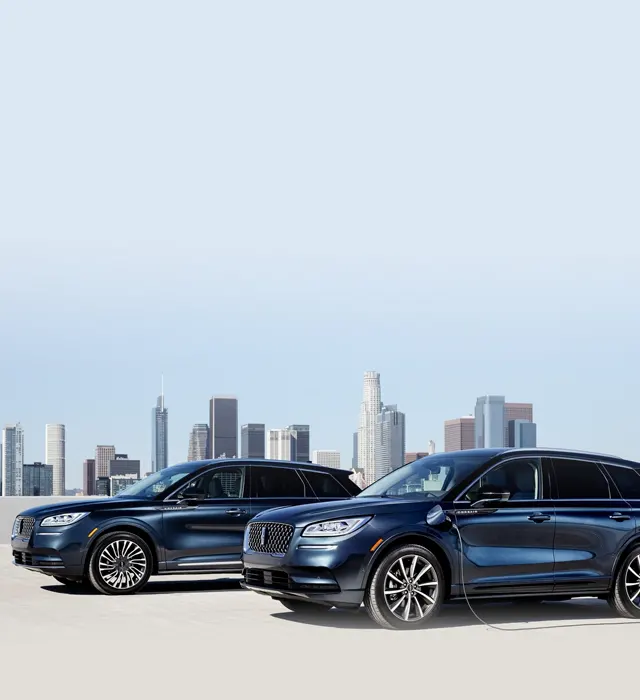Lincoln 100th Anniversary

Celebrating 100 Years of Lincoln
THE FOUNDING YEARS
There are a number of significant pioneers in the American Automotive Industry, including Henry M. Leland — a distinguished machinist, engineer, and automotive entrepreneur. Leland was responsible for founding two premier American luxury automotive companies in his lifetime — Cadillac and Lincoln.
Leland became involved in helping to establish Cadillac in 1902 after Henry Ford left the Ford Motor Company. Instead of liquidating assets, they opted to utilize Leland's single-cylinder engine and transform into Cadillac. Leland went on to sell Cadillac to General Motors in 1909 for $4.5 million while remaining as an executive until he departed from his position of President in 1917.
Guided by a patriotic desire, in 1917 Leland went on to start the Lincoln Motor Company as a way to assist the United States in manufacturing Liberty V12 aircraft engines during WWI.
After the war, Henry Leland and his son, Wilfred transitioned the company into building luxury automobiles and were officially recognized as an automaker in January 1920. Shortly after in August 1920, the pair proudly saw the very first Lincoln automobile, a 1921 Model L leave the Lincoln factory in Detroit, Michigan.

Henry M. Leland was a machinist, engineer, and automotive entrepreneur. Leland founded two premium American luxury automotive companies in his lifetime — Cadillac and Lincoln.

After selling Cadillac to General Motors, Leland continued on with the company as President until his departure in 1917 to fulfill a patriotic urge. In 1917 Leland started Lincoln Motor Company and was contracted by the United States to produce Liberty V12 aircraft engines during WWI.
Photograph courtesy of the Detroit Public Library, National Automotive History Collection

After the war, Henry Leland and his son Wilfred transitioned Lincoln into a luxury automaker gaining official recognition in January 1921. The first Lincoln automobile, a 1921 Model L left the factory just nine months later in August 1920.
LINCOLN'S FIRST MODEL & FORD ACQUISITION
Introduced in 1920, the Lincoln Model L was the very first Lincoln model sold. It was powered by a 357.8 cubic inch engine that produced 90 horsepower and weighed a total of 4,290 pounds. The original price to own a Lincoln Model L in 1920 was $4,300. Henry Leland was known by many as the "master of precision" which is why the models proudly carried the designation "Leland-Built" on their radiator badges signaling a vehicle produced with skilled engineering and assembly. While the first Lincoln vehicles were known to be both well-built and well-engineered, they lacked the attractive styling that consumers expected from a premium automobile.
Timing is everything for new companies and entrepreneurs and unfortunately Lincoln debuted during a postwar economic recession. By late 1921, the company was seeing financial difficulty and forced into bankruptcy. Due to the severe financial matters and dissent within their stockholder group, Henry and Wilfred Leland were left no choice but to sell Lincoln Motor Company. On February 4, 1922, Henry Ford came to the rescue, and Lincoln was officially sold to the Ford Motor Company for $8 million dollars. While valued at $16 million, Ford was the sole bidder. Henry Ford’s son, Edsel Ford took over responsibility and was named president of Lincoln Motor Company and Henry and Wilfred remained for just a short period. Edsel was inspired by his love of art and was given the freedom to experiment and develop his talents for beautiful automotive design.

Father made the most popular car in the world. I want to make the best car in the world.
Edsel Ford,President of the Lincoln Motor Company
A CENTURY OF INNOVATION
Introduced in 1920, the Lincoln Model L was the very first Lincoln model sold. It was powered by a 357.8 cubic inch engine that produced 90 horsepower and weighed a total of 4,290 pounds. The original price to own a Lincoln Model L in 1920 was $4,300. Henry Leland was known by many as the "master of precision" which is why the models proudly carried the designation "Leland-Built" on their radiator badges signaling a vehicle produced with skilled engineering and assembly. While the first Lincoln vehicles were known to be both well-built and well-engineered, they lacked the attractive styling that consumers expected from a premium automobile.
Timing is everything for new companies and entrepreneurs and unfortunately Lincoln debuted during a postwar economic recession. By late 1921, the company was seeing financial difficulty and forced into bankruptcy. Due to the severe financial matters and dissent within their stockholder group, Henry and Wilfred Leland were left no choice but to sell Lincoln Motor Company. On February 4, 1922, Henry Ford came to the rescue, and Lincoln was officially sold to the Ford Motor Company for $8 million dollars. While valued at $16 million, Ford was the sole bidder. Henry Ford’s son, Edsel Ford took over responsibility and was named president of Lincoln Motor Company and Henry and Wilfred remained for just a short period. Edsel was inspired by his love of art and was given the freedom to experiment and develop his talents for beautiful automotive design.
Images courtesy of: lincolncarmuseum.org
Through the years, Lincoln has strived to be at the forefront of cutting-edge technologies in the automobile industry and was responsible for introducing a number of new features and innovations and continue to advance the luxury automobile market today.
Here are just some of the most notable Lincoln moments and features from the last 100 years.
HERE'S TO A NEW CENTURY TOGETHER
Since the beginning, Lincoln has focused on being an innovative, forward‑thinking brand while maintaining its commitment to creating compelling vehicles with an exceptional ownership experience. Above all else, we've promised to deliver a truly effortless driving experience while maintaining craftsmanship, quality, and thoughtfully designed details that enliven the senses.
Here is a look at what is to come in the future for Lincoln - we're going boldly into our next century.

Our first‑ever fully electric vehicle debuts next year.
It's just the start of our commitment to a fully electrified lineup by 2030, in addition to even more connected features and services. By mid‑decade, our goal is that half our global sales will be zero-emission vehicles.
Electrification will take Quiet Flight to a new level with the smooth, exhilarating take-off feel and serene quietness our clients expect from a Lincoln.
— Joy Falotico president, Lincoln

Plug-In Hybrid Electric Vehicles
The Lincoln Grand Touring models offer our most powerful and advanced performance.
Lincoln continues to evolve and shift towards electrification. Currently, there are three PHEV options in the Lincoln lineup — the Aviator Black Label Grand Touring, Aviator Grand Touring, and Corsair Grand Touring. Equipped with twin-turbocharged engines and plug‑in hybrid technology, our Touring models offer heightened performance, convenient charging, and options for choosing how best to use your vehicle's electric power.

Introducing the 2022 Navigator
The new 2022 Navigator will soon be arriving at our dealership with well-perceived changes such as a 13.2" infotainment display, wireless Apple CarPlay and Android Auto, and a new 5.8" display between the captain's chairs in the second row. We are also excited for our newest technology, ActiveGlide, our hands-free driver aid to debut.

Lincoln ActiveGlide
Lincoln ActiveGlide uses a combination of advanced camera, radar, and driver monitoring technologies and a specified mapping system to provide a Level 2 advanced driving assistance system that will be introduced on future Lincoln vehicles. Once a driver initiates activation and is in a Hands-Free Blue Zone safe for hands-free vehicle operation, ActiveGlide will take complete control of the vehicle for an authentic hands-free driving experience.










